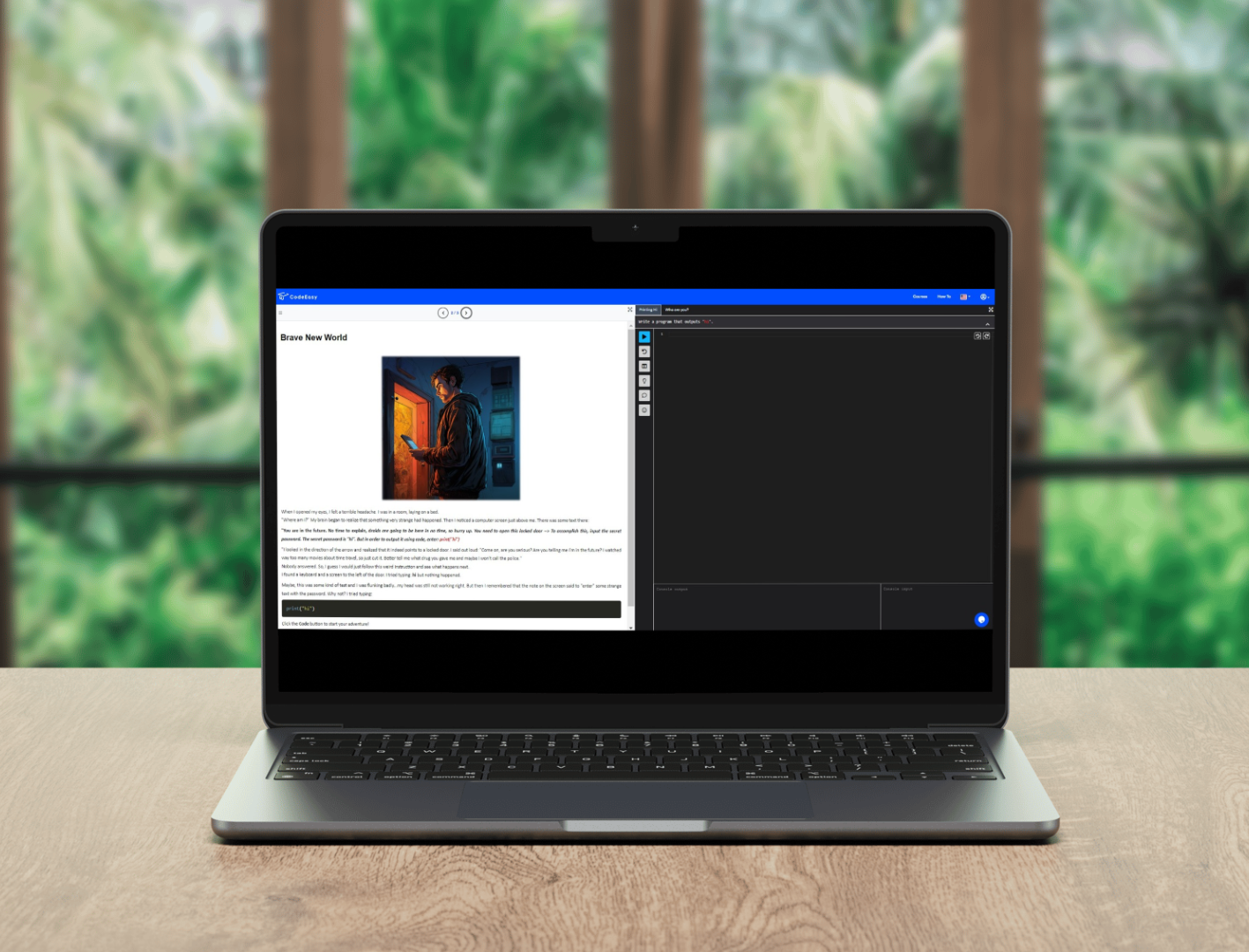Is Python Good As A First Programming Language to Learn for Beginners?
When it comes to choosing a first programming language, Python often tops the list. Its simplicity and readability make it an excellent choice for beginners. But what makes Python so suitable as a starting point in programming? Here’s an in-depth look at why Python is considered an ideal first programming language for beginners.
1. Simplicity and Readability
Easy-to-Read Syntax:
Python's syntax is clean and straightforward, which makes it easier for beginners to understand and write code. The language uses indentation to define blocks of code, which enforces good coding practices and enhances readability. This reduces the learning curve, allowing beginners to focus on learning programming concepts rather than getting bogged down by complex syntax.
Natural Language:
Python code often reads like plain English. For example, compare a simple "Hello, World!" program in Python to other languages:
- Python
print("Hello, World!")- Java
public class HelloWorld {
public static void main(String[] args) {
System.out.println("Hello, World!");
}
}The simplicity of Python's syntax makes it accessible to those who are new to programming.
2. Versatility and Flexibility
Multi-Paradigm Support:
Python supports multiple programming paradigms, including procedural, object-oriented, and functional programming. This flexibility allows beginners to explore different programming styles and choose the one that suits them best.
Wide Range of Applications:
Python is used in various fields such as web development, data science, artificial intelligence, scientific computing, and more. This versatility means that beginners can easily transition to different areas of interest using the same language.
Web Development
Python Frameworks and Libraries
Examples:
- Instagram: Uses Django for its server-side operations.
- Spotify: Utilizes Python for backend services and data analysis.
Data Science and Machine Learning
Examples:
- Netflix: Uses Python for its recommendation engine.
- Spotify: Implements Python for its data analysis and recommendation algorithms.
- Airbnb: Utilizes Python for data science to improve user experience.
Game Development
Libraries and Frameworks:
- Pygame: A set of Python modules designed for writing video games.
- Panda3D: A game engine that allows for real-time 3D games and simulations.
Examples:
- Eve Online: A complex multiplayer online game that uses Python for its server code.
- Civilization IV: A popular strategy game that uses Python for its game logic and AI scripting.
Scientific Computing
Libraries:
- SciPy: Used for scientific and technical computing.
- Matplotlib: A plotting library for creating static, interactive, and animated visualizations.
- SymPy: A library for symbolic mathematics.
Examples:
- NASA: Uses Python for various scientific computations and data analysis tasks.
- Large Hadron Collider (CERN): Uses Python for data analysis and visualization.
Artificial Intelligence (AI) and Deep Learning
Libraries:
- TensorFlow: An open-source library for numerical computation and machine learning.
- Keras: A high-level API for building and training deep learning models.
- PyTorch: An open-source machine learning library developed by Facebook’s AI Research lab.
Examples:
- Google: Uses TensorFlow for various AI projects.
- OpenAI: Utilizes Python for developing AI technologies and research.
Finance and FinTech
Libraries:
- QuantLib: A library for quantitative finance.
- zipline: An algorithmic trading library.
Examples:
- Quantitative Trading: Python is used for developing and testing trading strategies.
- Risk Management: Financial institutions use Python for modeling and assessing risks.
Networking
Libraries:
- Twisted: An event-driven networking engine.
- Paramiko: A library for making SSH2 connections.
Examples:
- Network Automation: Python scripts are used for automating network configurations and managing network devices.
- Security Tools: Python is used for developing security tools and automating security tasks.
Desktop GUI Applications
Libraries:
- Tkinter: A standard GUI toolkit for Python.
- PyQt: A set of Python bindings for Qt libraries.
Examples:
- BitTorrent: Uses Python for its client application.
- Dropbox: Initially developed using Python for its desktop application.
3. Extensive Community and Resources
Strong Community Support:
Python has a large and active community of developers who contribute to a wealth of resources, including tutorials, forums, and libraries. This means that beginners can easily find help and guidance when they encounter challenges. Python.Org community, Stack Overflow, Reddit, Github, Python Discord, PySlackers etc. are some of the most popular online.
Abundance of Learning Materials:
There is no shortage of Python learning materials, including books, online courses, and tutorials. Popular resources include:
- "Python Crash Course" by Eric Matthes: A hands-on, project-based book for beginners.
- "Automate the Boring Stuff with Python" by Al Sweigart: Focuses on practical applications and task automation.
- Online Platforms: Websites like CodeEasy, Codecademy, Coursera, and Udemy offer comprehensive Python courses.
Here is our article on highly-rated Python Programming books for beginners:
Must-Read Books for Python Programming Beginners: A Comprehensive Guide
4. High Demand in the Job Market
Career Opportunities:
Python's popularity in various industries has led to a high demand for Python developers. According to job market analysis, Python consistently ranks among the top programming languages in terms of job postings and salary prospects. This makes it a valuable skill for career development.
Here you can read more about Advantages of a Python Developer Career in our article:
10 Advantages of a Career as a Python Developer
Industry Use:
Major companies like Google, Facebook, and Netflix use Python extensively. Learning Python opens up opportunities to work with leading tech companies and on cutting-edge projects.
5. Powerful Libraries and Frameworks
Extensive Library Ecosystem:
Python boasts a rich ecosystem of libraries and frameworks that extend its capabilities. Libraries like NumPy, pandas, and matplotlib make it a powerhouse for data analysis, while frameworks like Django and Flask are popular for web development.
Beginner-Friendly Libraries:
Many Python libraries are designed with ease of use in mind. For example, the turtle library is great for teaching programming concepts through simple graphics, making it perfect for beginners.
6. Interactive Development Environment
REPL (Read-Eval-Print Loop):
Python's interactive shell allows beginners to test code snippets in real-time. This immediate feedback loop helps in quickly understanding how code works and in debugging errors.
Educational Tools:
Python has several educational tools like Jupyter Notebooks, which provide an interactive environment for writing and testing code. These tools are particularly useful for learning and teaching programming.
Conclusion
Python's simplicity, versatility, extensive community support, and high demand in the job market make it an excellent first programming language for beginners. Its clear and readable syntax allows new programmers to grasp programming concepts quickly, while its powerful libraries and frameworks offer a smooth transition to advanced topics and real-world applications. Whether you aim to enter web development, data science, or any other tech field, Python provides a solid foundation to start your journey.
By choosing Python as your first programming language, you are setting yourself up for success with a tool that is not only beginner-friendly but also powerful and widely used across various domains.
Happy coding!


